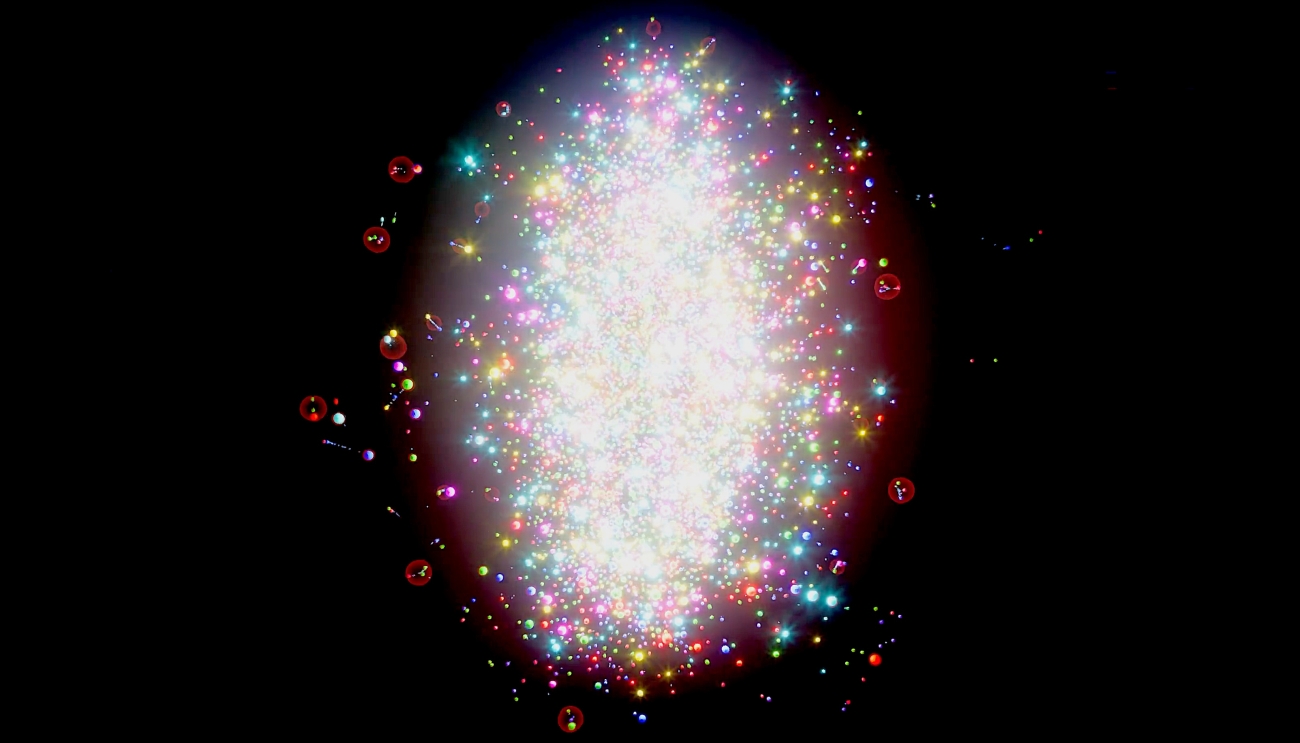Light ions at the LHC: first results from oxygen–oxygen and neon–neon collisions

This summer, the Large Hadron Collider (LHC) delivered its first-ever collisions between light ions, opening a new chapter in the study of nuclear structure and the quark–gluon plasma (QGP) – the extreme state of matter that existed in the first instants of the Universe. Over a period of six days, the four major LHC experiments – ALICE, ATLAS, CMS and LHCb – recorded oxygen–oxygen and neon–neon collisions, alongside proton–oxygen interactions. First results were presented at the Initial Stages of High-Energy Nuclear Collisions conference in Taipei, Taiwan, and at a dedicated CERN seminar.
Smashing atomic nuclei together at high energy allows physicists to recreate the QGP, a hot and dense medium where quarks and gluons are no longer confined inside hadrons. Until now, studies at the LHC have focused on heavy ions such as lead and xenon, which maximise the size of the QGP droplet created. Lighter ions such as oxygen and neon open a new window: they are small enough to probe the minimal conditions needed to form QGP, while also offering unique nuclear geometries. Neon, for example, is predicted to be elongated like a bowling pin – a feature that can leave an imprint on the observed particle distributions.
ALICE: mapping QGP across system sizes
ALICE, the experiment dedicated to heavy-ion physics, carried out a comprehensive programme of measurements in oxygen–oxygen and neon–neon collisions. The collaboration reported clear signals of elliptic (v₂) and triangular (v₃) flow in both systems, with strong centrality dependence and magnitudes comparable to those in heavier systems. These results strengthen the evidence that hydrodynamic behaviour emerges even in small collision systems.
ALICE also measured charged-particle multiplicity distributions, which are essential to characterising the initial conditions of the collisions. Together with particle spectra and the first nuclear modification factor (R_{AA}) studies in light-ion collisions, these results extend ALICE’s longstanding programme of scanning QGP properties across system sizes, from Pb–Pb through Xe–Xe down to O–O and Ne–Ne. The measurements already show sensitivity to the nuclear structure of oxygen and neon, underlining ALICE’s central role in establishing the minimal conditions for QGP formation.
ATLAS: from collectivity to cosmic rays
ATLAS focused on both collective flow and new probes of medium properties. The collaboration reported sizeable flow coefficients in O–O and Ne–Ne collisions, showing how nuclear geometry leaves a clear imprint on the final-state particle distributions. These results are consistent with hydrodynamic model predictions, comparable to those achieved in heavier-ion systems, and support the picture of deformed nuclear geometries – particularly the “bowling-pin” structure of neon.
Uniquely suited to study jets, ATLAS is investigating the onset of jet quenching – the energy loss of high-energy jets as they traverse the medium. The oxygen–oxygen collisions may represent the “tipping point” system size where jet quenching first becomes visible, offering crucial insight into the conditions required for this QGP signature to emerge.
The proton–oxygen collisions recorded in the same run also open a bridge to cosmic-ray physics. As high-energy cosmic rays strike oxygen and nitrogen in Earth’s atmosphere, they generate extensive air showers. ATLAS data, complemented by the LHCf experiment, will help constrain these processes, with direct relevance for space-based detectors such as AMS on the International Space Station.
Behind the scenes, ATLAS prepared intensively for the fast-paced run: boosting its data bandwidth by 50% through local storage strategies, refining its event-selection triggers, and installing a new Zero Degree Calorimeter (ZDC) to monitor spectator neutrons in real time. These efforts ensured that the rare opportunity of the light-ion run could be fully exploited.
CMS: suppression and scaling
CMS complemented the flow studies with detailed measurements of charged-particle suppression. The nuclear modification factor (R_AA) was found to dip to values around 0.6–0.65 at intermediate transverse momentum, before rising toward unity at higher momentum. This suppression pattern is consistent with parton energy loss in a dense medium, providing evidence for QGP-like behaviour even in light-ion collisions.
By comparing results across oxygen, neon, xenon and lead systems, CMS traced a scaling of suppression with nuclear size, offering new insight into how energy loss depends on the geometry and path length of the traversed medium. This system-size dependence extends the reach of parton energy-loss studies to the smallest collision systems explored so far at the LHC.
LHCb: nuclear shape from a fixed-target view
The LHCb collaboration added a unique perspective through its fixed-target programme. Using the SMOG2 system to inject gas into the LHC beam pipe, LHCb studied lead–argon and lead–neon collisions in 2024. The comparison of collective flow coefficients between Pb–Ar and Pb–Ne revealed significant differences, consistent with hydrodynamic expectations for a deformed neon nucleus. These findings provide complementary confirmation of the peculiar “bowling-pin” shape of the neon nucleus.
LHCb has also begun analysis of the oxygen–oxygen and neon–neon collisions from this year’s special run, which will provide further insights into nuclear geometry and the formation of QGP in light-ion systems.
A collective achievement
Taken together, these early results demonstrate the versatility of the LHC heavy-ion programme. By extending studies to light ions, the four experiments provide complementary views on nuclear structure, the emergence of collective behaviour, and the minimal conditions required for QGP formation. The strong consistency between data and hydrodynamic models across different collision systems strengthens confidence in our theoretical understanding and points the way toward deeper insights into how matter behaved in the earliest moments of the Universe.
Further analyses of the special-run data are underway, promising more detailed results in the months to come.
